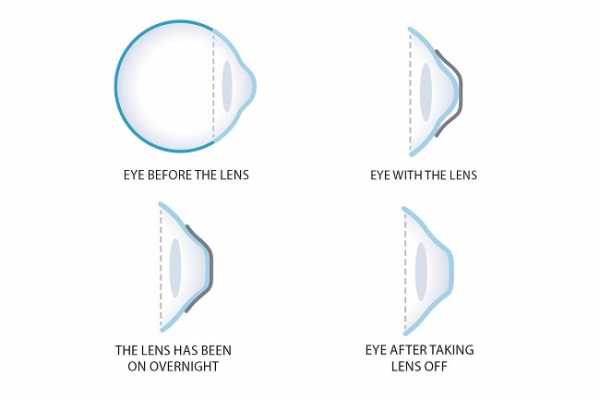
Orthokeratology Lenses
Orthokeratology or ortho k is non-surgical treatment for temporary refractive error correction in which there will be using of special designed rigid contact lens called reverse geometry lens to reshape the corneal surface and make it flatter during the night and to achieve best corrected vision during the day.
It is used to correct myopia and astigmatism. By making the cornea flatter, the eye becomes less myopic.
Parts of ortho k lenses
This lens has three parts. The central part which is called the base curve which should be made flatter than the corneal curvature.
The second part which is steeper than the base curve and is called reverse curve. This part will prevent the lens from decentering or moving with each blinking.
The third part which is the peripheral one and it is flatter than the other two parts and it is called alignment part which helps in centration of the lens on cornea. This special lens design will allow the lens to stay in place and maintain centration.
To monitor the progress of the treatment and to change the parameters of this contact lens, the doctor will use corneal topography.
In Overnight Orthokeratology, the patient uses special rigid gas permeable contact lenses with high oxygen permeability and he can wear them during sleeping.
This overnight type is more convenient to the patient, because there will be no need to wear contact lenses during the day. He can use them before bedtime and remove them in the morning so he will have optimal results during all waking hours.
This type of procedure is also appropriate for children and teenagers because it is not necessary for the refractive error to be stable and in children, it was seen to be safe and effective as young as 8 years of age.
When the lens wear is discontinued, the refraction will move toward the baseline at a rate of 0.50 to 0.75 per hour.
Complications of Orthokeratology
Those patients should be monitored carefully for Orthokeratology complications.
1- Almost 75% of the patients experienced discomfort at some point during Ortho-K lens wear.
2- These lenses can induce high order aberration and also can induce astigmatism.
3- Recurrent corneal erosions.
4- Infectious keratitis which was seen more in children and teenagers.
This type of procedure can correct:
1- Myopia from - 0.50 D to - 6.0 D
2- Astigmatism up to -1.75 D


